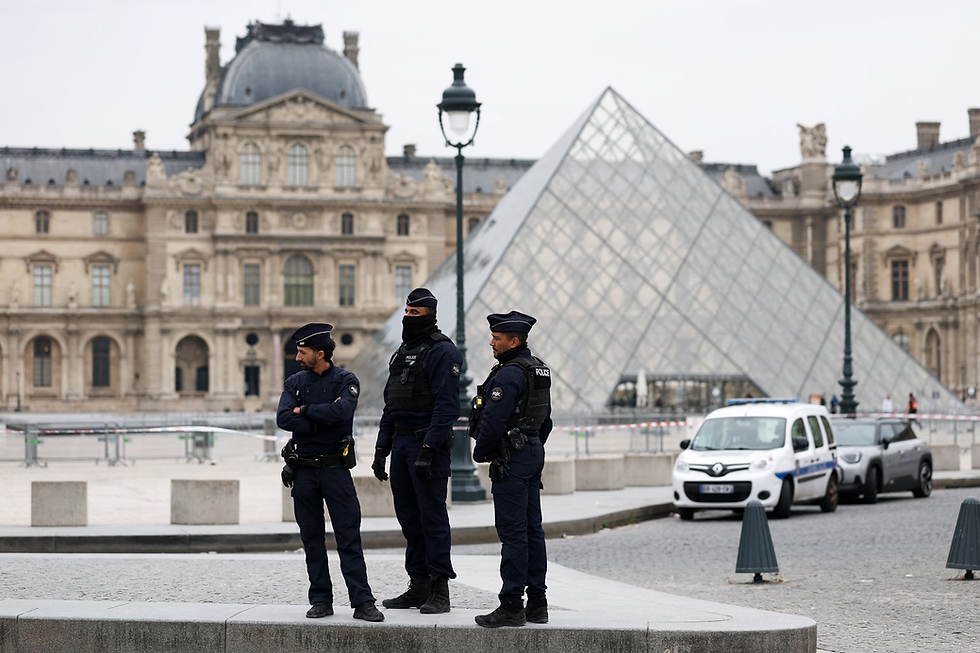Opinion: The 'Neon Vest Theory' strikes again
- Brennan Wills

- Oct 20
- 3 min read
This weekend, the Louvre Museum was burglarized by four thieves who stole eight priceless crown jewels from the Apollo Gallery. They used a lift to breach the balcony and then made their way into the gallery to smash windows and escape on motorcycles. How did they disguise themselves when they went from the balcony to the main floor? They weren't clad in all-black and ski masks, they were wearing neon vests.
In the mid-2010s, 'The Neon Vest Theory' was a popular internet trend that suggested that if you walked into a private or restricted area wearing a high-visibility (hi-vis) neon vest, people would think that you were allowed to go there. People would discretely video record themselves or their friends and watch them sneak into areas, such as a movie theatre, amusement park ride, or even a zoo.
The Neon Vest Theory displays a genuine concern of complacency with our surroundings in society. As long as you wear the neon vest and act like you belong, people will believe that you have the general authority to go into some location. Some might be wondering why neon vests work. Well, hi-vis vests are worn by people on jobs that often require going to look at tough-to-manage equipment or handling it. These professions include technicians, construction workers, airport crews, or even emergency responders.
In today's news, hi-vis vests got a fresh glance of visibility in light of the Louvre Robbery on Sunday. The thieves descended into the Apollo Gallery wearing hi-vis vests, letting the public assume that they were performing important museum tasks. By the time that the thieves smashed the windows and triggered the security alarms, it was too late. People were too started to notice or process what was going on before they realized that precious jewels were stolen by a neon-clad crime ring.
The Neon Vest Theory serves as a social experiment for some and a free ticket for most. When you see the vest, you assume that the person wearing it has something important to do that you can or could not.
The vest gives off the impression that the person wearing it knows what they are doing. This is reminiscent of one finding from the controversial Stanley Milgram Experiment, also called the 'Electric Shock Experiment.'

In the psychological experiment by Yale professor Stanley Milgram, participants were urged to give a series of questions to a man on the other side of a wall. Every time the man got a question wrong, the participant was instructed by a proctor in a gray lab coat to administer electric shocks. The participant could hear the question recipient cry on the other side of the wall as the voltage of the shocks increased. Many participants wanted to stop, but the proctor urged them to continue. Most participants increased the voltage past the lethal limits, often feeling disturbed when they no longer heard the recipient's screams on the other side.
But the catch was ... there was no man on the other side of the wall. The entire experiment was not to test Q&A memory with electric shocks, it was to see how far someone would go if they were instructed to administer electric shocks to an individual they could not see. Stanley Milgram was born to Jewish immigrants in 1933, and in the 1960s, wanted to understand how something like the Holocaust could happen. Psychiatrists suggested that no more than 0.1% of the participants would make it to 150-300 volt threshold, but the study found that 100% of the participants reached 300 volts and 2/3rds of them went all the way to the maximum 450 volts.
I bring this experiment up because one of the minor findings of the study was that participants never exceeded the lethal limit ... if the proctor wasn't wearing a gray lab coat. This reinforces the Neon Vest Theory that the attire people wear reinforces the public perception that the person is trying to convey to the people around them.
Some people used hi-vis vests to get into the movies for free or slip into the kitchen of their favorite restaurant just for kicks. But in many serious cases, actual crimes were committed under the guise of being a qualified professional in a neon vest. With an attire so vague yet so powerful, it is important for the public to keep a watchful eye out for imposters looking to venture into places they don't belong.




.png)



Comments